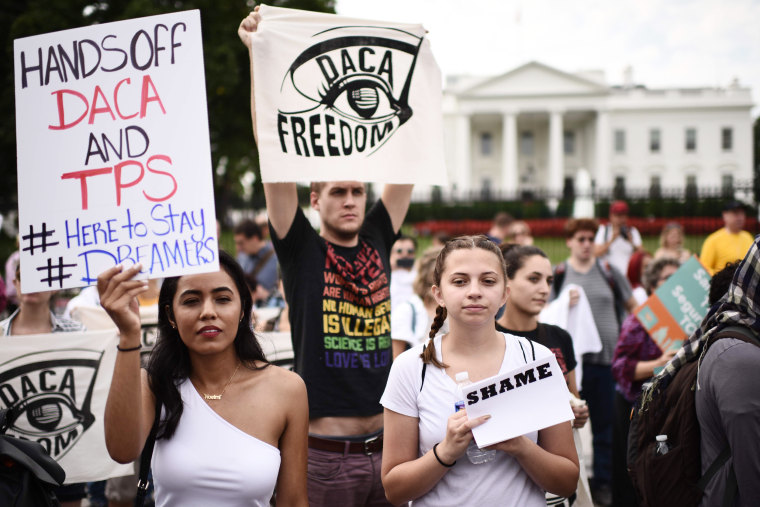The Trump administration plans to "wind down" the government program that protects young undocumented immigrants from deportation, Attorney General Jeff Sessions announced Tuesday.
The end of the Deferred Action for Child Arrivals, or DACA, initiative is sure to be intensely debated across the country. Here's what you need to know about the program.
What exactly is DACA?
President Barack Obama created DACA through a 2012 executive order. The program has allowed hundreds of thousands of young people who were brought to the United States illegally as children to remain in the country. Applicants cannot have serious criminal histories, and must have arrived in the U.S. before 2007, when they were under the age of 16. DACA recipients can live and work legally in the U.S. for renewable two-year periods.
Who has signed up?
As many as 800,000 so-called Dreamers have applied to join the initiative since its inception. Immigration rights advocates have said some 200,000 more have sought DACA protection since Donald Trump became president. Some experts have said the program could end up covering 1.3 million young people if it were allowed to continue. Requests for renewals are now being filed at the rate of about 8,000 a week.

Who are they and why are they called 'Dreamers'?
DACA was a compromise created by the Obama administration after Congress failed to pass the Development, Relief and Education for Alien Minors (DREAM) Act.
DREAM would have offered those who came to the U.S. illegally as children the opportunity to potentially gain permanent legal residency. The act was first introduced in August 2001 by Sen. Orin Hatch, R-Utah, and Dick Durbin, D-Ill. It has resurfaced several times, always failing to get through Congress.
What did Trump decide to do?
The Trump administration, after days of speculation, announced Tuesday it will end DACA. "I'm here today to announce that the program known as DACA that was effectuated under the Obama administration is being rescinded," Sessions announced, calling the program unconstitutional and criticizing it as "unilateral executive amnesty."
No new applications for the program will be accepted, Sessions said. The administration will allow DACA recipients with a work permit set to expire before March 5, 2018, the opportunity to apply for a two-year renewal.
What happens next?
The administration is giving Congress six months to come up with a fix before the federal government officially stops renewing permits for current DACA recipients.
Democrats have been overwhelmingly united in their effort to preserve the policy, and some influential Republican lawmakers have also suggested revamping DACA instead of scrapping it altogether.